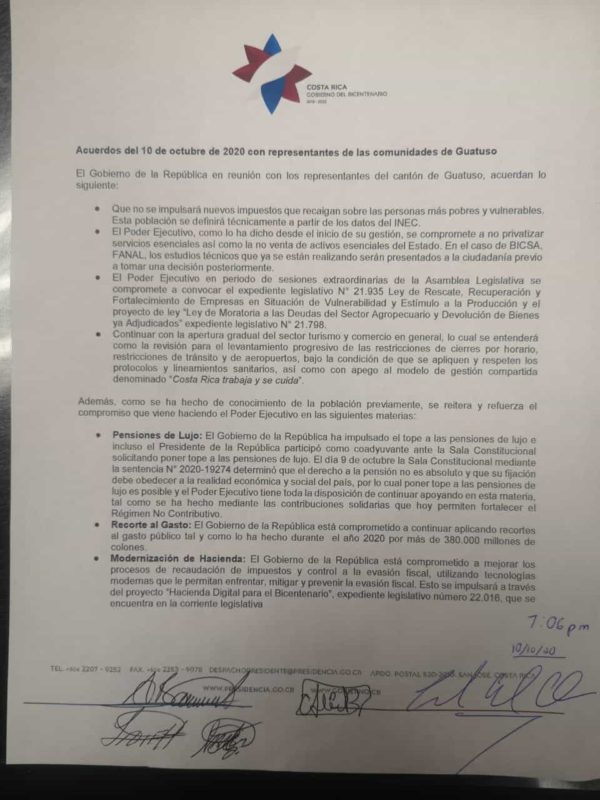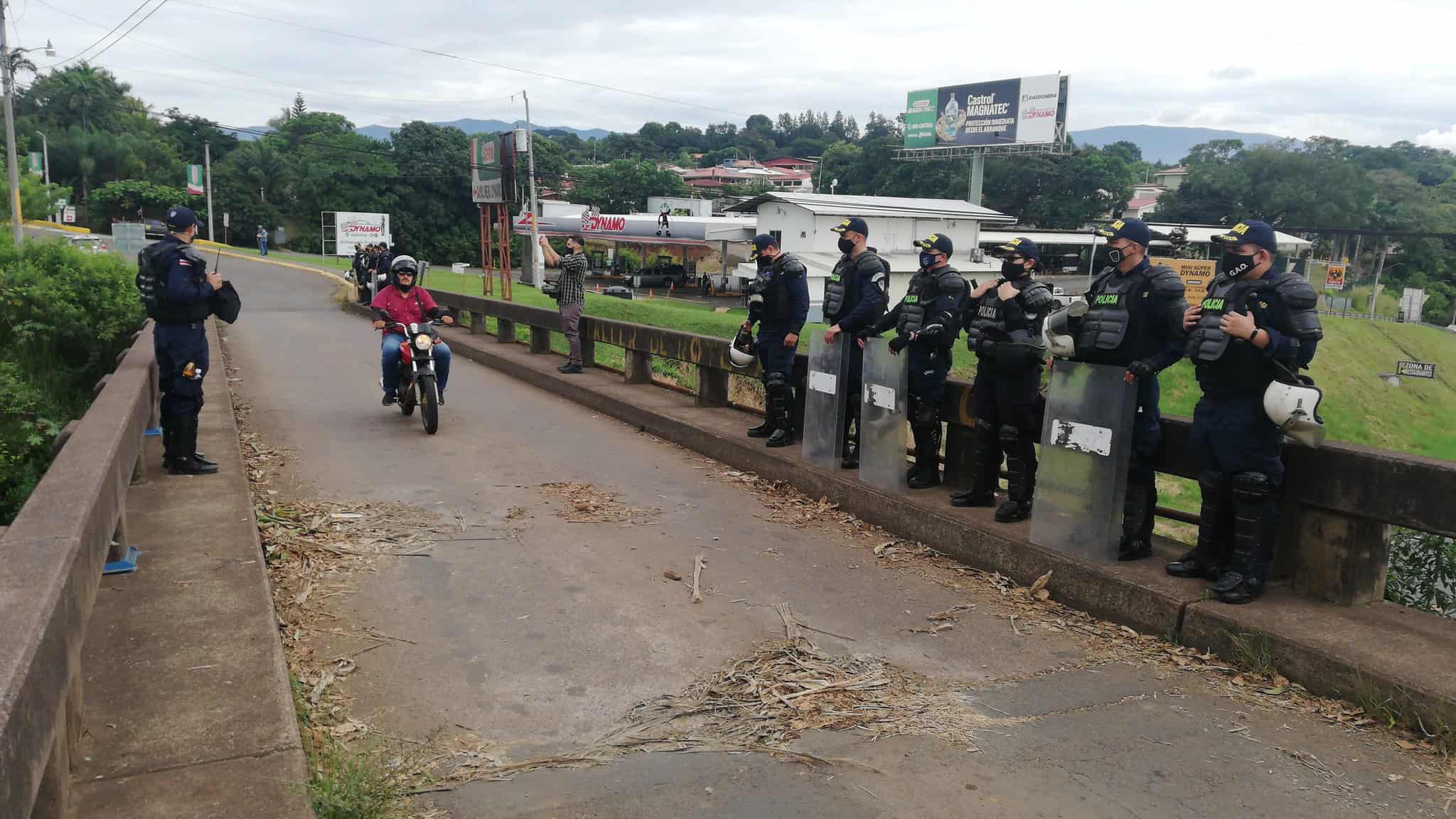The Costa Rican Presidency says it continues to dialogue with various sectors in an effort to end the blockades and protests that have impacted transit across the country for nearly two weeks.
Saturday, the government reported 16 blockades and 15 additional spots where demonstrations were limiting traffic. The Public Security Ministry (MSP) hasn’t yet tallied Sunday’s affectations.
As part of an agreement signed by the Presidency in the northern canton of Guatuso, Alajuela, the government agreed not to introduce new taxes against the poorest Costa Ricans; to limit luxury pensions; and to cut public spending.

Demonstrations began in context of Costa Rica’s planned negotiations with the International Monetary Fund (IMF) for a $1.75 billion loan. To secure that financing, the Presidency had proposed a since-withdrawn series of tax increases.
The Movimiento Rescate Nacional, a group coordinating many of the protests, arranged for marches in San José and roadblocks meant to impact large companies that don’t pay taxes.
But the blockades have ultimately hurt tourism and affected medical care, and clashes with police became common last week.
“We are going to be more flexible so that people who have nothing to do with this are not being harmed,” deputy José Miguel Corrales, part of the movement, told La Nación.
Corrales and police have acknowledged the presence of drug traffickers at some of the blockades.
Costa Rican President Carlos Alvarado has denounced “violence and vandalism” and last week began meeting with various sectors to plan the country’s financial future.
Because blockades can change regularly, we recommend using Waze to plan your route — and a suitable backup — before driving.






